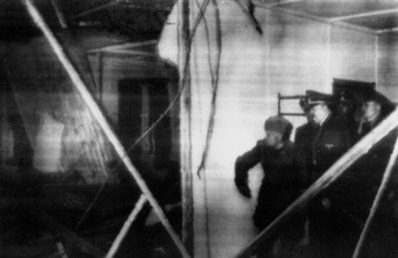BERLIN: Four German army officers who tried but failed to assassinate Adolf Hitler in 1944 were honored posthumously on Monday, 65 years after they were executed.
The July 20 plotters -- as they became known by the date of their 1944 execution -- were viewed as traitors immediately after World War II, but have since been celebrated annually for their attempt to use a briefcase bomb to kill Hitler.
|

In this July 1944 file picture, Hitler and Mussolini are seen surveying the damage inside Hitler's Wolf's Lair (Wolfschanze) headquarters in East Prussia following an assassination attempt of high-ranking officers of the Wehrmacht against Hitler on July 20, 1944. [Agencies]
|
Col. Claus Graf Schenk von Stauffenberg placed the bomb in a conference room where Hitler was meeting with his aides and military advisers, but Hitler escaped the blast because someone moved the briefcase next to a table leg, deflecting much of the explosive force.
The day has gained significance as wounds over the war heal and Europe grows comfortable with reunified Germany.
On Monday, German leaders commemorated the four plotters at a ceremony at the Berlin Ploetzensee Memorial Center for the victims of the Nazis, and during the swearing in of 400 army recruits at an annual ceremony in front of the Reichstag attended by Chancellor Angela Merkel.
Germany holds the swearing-in ceremonies each year to highlight the resistance to Hitler from within the military and the inspiration for Germany's postwar army -- with missions mandated by parliament, and not by the head of state.
For years the swearing-in ceremonies were held at the Bendlerblock building, now the Defense Ministry, where the plotters were executed. But they were moved last year to the Reichstag, the seat of Germany's parliament.
Historians still argue, however, about the four plotters' motives and commitment to democracy, given their conservative views and early support for Hitler.

